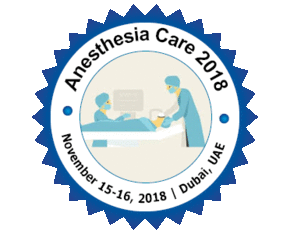
Utsav Acharya
Sushma Koirala Memorial Hospital, Nepal
Title: Pre-emptive use of oral gabapentin or pregabalin for acute postoperative pain following lower limb orthopaedic surgery under spinal anesthesia
Biography
Biography: Utsav Acharya
Abstract
Background And Objectives: Postoperative pain is a major cause of perioperative morbidity and functional impairment.
Preemptive analgesia is an analgesia regimen instituted before the surgery, with an aim to desensitize the pain pathways and
thus, reduce postoperative pain. Pregabalin and gabapentin have been claimed to be effective in reducing the magnitude of
postoperative pain, without significant alterations in hemodynamics. This study was conducted to compare the effectiveness
of Pregabalin and gabapentin in reducing postoperative pain, total opioid consumption, postoperative nausea and vomiting
(PONV) and sedation in patients undergoing lower limb orthopedic surgeries under spinal anesthesia.
Methods: Eighty patients undergoing lower limb orthopedic surgeries under spinal anesthesia were randomly divided into two
equal groups. Group A received 300mg gabapentin and Group B received 150mg Pregabalin, approximately one hour before
surgery. The patients were evaluated at 1, 2, 6, 12 and 24 h postoperatively and Visual Analogue Scale (VAS) score for pain,
PONV and sedation score was monitored. Tramadol 50 mg IV was used as the rescue analgesic and total consumption over 24
hours was recorded.
Results: The mean duration of postoperative analgesia was significantly higher in Group B (282±106 mins versus 234 ±
97mins, p=0.009). The sedation score was significantly higher in Group B in the first hour after surgery (p=0.001). The total
consumption of tramadol over 24 hours was higher in Group A; however, it was statistically insignificant. The occurrence of
PONV was comparable between the groups. None of the groups were associated with significant hemodynamic alterations.
Minor adverse effects such as dizziness, sedation, and headache were observed in both groups.
Conclusion: Pregabalin 150 mg orally significantly increases the duration of postoperative analgesia than gabapentin 300mg
following lower limb orthopedic surgeries under spinal anesthesia. Although sedation is frequently observed, it doesn’t alter
the hemodynamics and thus, may be used safely.

